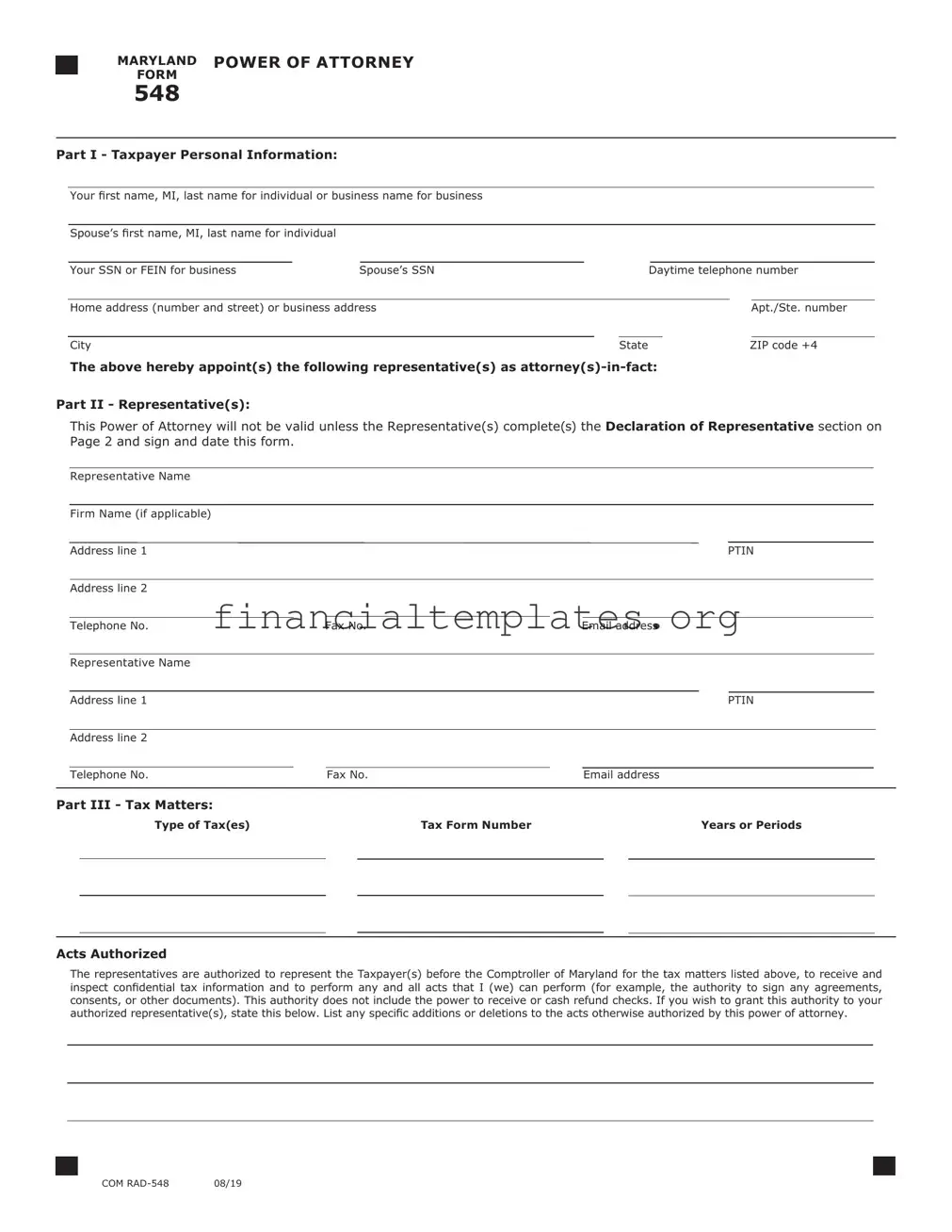The Durable Power of Attorney (POA) for healthcare decisions is akin to the Tax Power of Attorney form in its function of granting authority to a designated individual. Both documents allow individuals to appoint representatives to make crucial decisions on their behalf—tax-related decisions in the case of the Tax POA, and healthcare decisions for the Durable POA for healthcare. This setup ensures that the principal's wishes are honored in specific arenas of their life, whether financial or healthcare-related, in times when they cannot make these decisions themselves.
Similarly, the General Power of Attorney (POA) document shares common ground with the Tax POA form. This document likewise vests a chosen agent with the power to act on the principal's behalf. However, the scope of the General POA is broader, encompassing a wide range of legal and financial decisions beyond just tax matters. The Tax POA is a more specialized form, focusing solely on tax matters, but both are essential legal tools for estate planning and managing one’s affairs through representation.
The Living Will is another document that parallels the Tax POA form in terms of allowing individuals to express their wishes in advance, albeit focusing on end-of-life care rather than tax issues. While the Tax POA appoints an agent to handle tax affairs, the Living Will speaks to healthcare professionals about the types of life-sustaining treatments an individual does or does not wish to receive. Both documents serve to ensure that an individual’s preferences are respected and legally recognized in critical moments.
The Revocable Living Trust is related to the Tax POA form as it concerns the efficient management and protection of the individual's assets. With a Revocable Living Trust, an individual can outline how their assets should be managed during their lifetime and after their death. Like the Tax POA, which designates an agent for tax purposes, a trust involves appointing a trustee to manage and distribute the trust's assets in accordance with the grantor's wishes, ensuring financial affairs are in order.
The Financial Power of Attorney document closely resembles the Tax POA form by allowing an individual to designate someone to manage their financial affairs. Though the Tax POA is explicitly for tax matters, both documents empower a representative to act in the principal’s financial best interest, be it managing bank accounts, investing, or handling tax issues. This ensures continuity in financial management when the principal is unable to do so.
The HIPAA Release Form is conceptually similar to the Tax POA in that it grants permission for a designated party to access specific, confidential information. For the Tax POA, this information relates to the individual’s taxes, while the HIPAA Release Form pertains to personal health information. Both forms are crucial for ensuring that pertinent information is accessible to trusted individuals, thus facilitating informed decision-making on the principal's behalf.
The Appointment of Guardian Form shares similarities with the Tax POA by enabling individuals to select someone who will make decisions for them, in this case, if they become unable to care for themselves or their property. While the Tax POA focuses on tax matters, the Appointment of Guardian covers a broader spectrum of personal and financial decisions, ensuring the principal’s well-being and affairs are managed according to their wishes.
The Bank Account Authorization Letter, like the Tax POA, allows individuals to grant others the authority to manage specific assets—this time, bank accounts. Both documents streamline the process of managing financial assets, be it accessing bank accounts or handling tax-related matters, by authorizing representatives to act on the individual’s behalf, ensuring financial operations can proceed without delays or legal hurdles.
Finally, the Advance Healthcare Directive can be likened to the Tax POA as both enable individuals to dictate how decisions should be made when they cannot make them independently. While the Tax POA deals with tax affairs, the Advance Healthcare Directive outlines preferences for medical treatment and health-related decisions. Each document plays a critical role in preemptive planning, safeguarding an individual's choices across different aspects of life.




